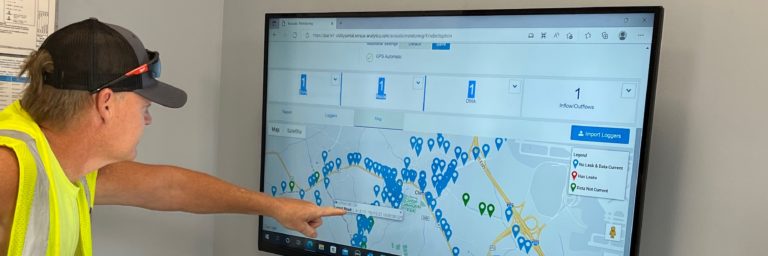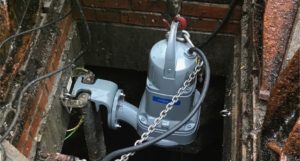Findlay Township Water Utility Quickly Identifies Leaks with Acoustic Monitoring

Findlay Township water utility quickly identifies leaks with acoustic monitoring (Image source: Xylem Inc.)
The solution has enabled the utility to cut costs related to overtime and water loss.
Every drop of water counts, especially when you purchase your water from an independent source. Findlay Township Municipal Authority (FTMA) obtains their water from the Ohio River through paid interconnects with two neighboring authorities in Western Pennsylvania.
Nestled among Findlay Township’s rolling hills and wooded service territory are 75 miles of waterline. When remote leak detection became a priority for FTMA, they chose smart water technology from Sensus, a Xylem brand, to help tackle unaccounted water loss.
“We need to know of any abnormalities in our water system every day,” said Jason Orsini, Findlay Township Municipal Authority’s General Manager. “Sensus has a user-friendly system that allows us to train staff to know exactly where to go to make the fix.”
Remote monitoring of pipeline flow conditions
In 2019, the authority added remotely managed acoustic monitoring to their smart water network. The Sensus Analytics Acoustic Monitoring application monitors distribution lines and localizes leaks, using a combination of Permalog®+ technology, the FlexNet® communication network and SmartPoints®. By combining acoustic sensors and other applications with two-way communications on the FlexNet system, utilities can capture and analyze more data for optimal operational efficiency.
Previously the utility had to use the time-intensive process of lifting and shifting loggers from site to site, returning to the office for readings, then going back to the field for redeployment on a daily basis. Now the magnetically attached loggers remain in a permanent spot and technicians check on the entire distribution system from their work laptops each morning.
“We needed acoustic monitoring across our entire system, not only problem areas,” said Orsini. “This technology allows us to know of any abnormalities within our 75 miles of waterline every day, whereas before with a lift and shift system we may not know of a leak for anywhere up to 35 days.”
The acoustic sensors use soundwaves to listen to the distribution system overnight when ambient, background noise is at its lowest. Pipeline flow conditions are reported to the utility via FlexNet. The application automatically aggregates and analyzes data and alerts the authority when leaks occur. Moving to acoustic monitoring allows technicians to remotely identify and find leaks before they become major breaks.
“The system gives us a real quick snapshot of any issues within the system,” said Orsini. “We’ll know right away if there’s a leak, then our technicians must go out and investigate.”
Reduced costs and unaccounted water loss
It takes people to interpret the data. Orsini praises his team for learning the technology and proactively finding leaks. Most repairs can now be done during standard business hours. Employee overtime has significantly decreased from 200 monthly hours to less than 70 hours.
Findlay Township’s smart system also helps with unaccounted water loss, which has decreased from approximately 40 percent to five percent over the past decade, as a result of implementing both smart meters and acoustic monitoring. That’s a realized cost savings of $100,000 per year – crucial for a water provider that relies on outside sources for its water.
Cost reductions are not the only benefit that the authority has experienced since adding the Acoustic Monitoring application. The municipality’s customers are both surprised and delighted at the quick response from the utility when issues arise, especially when leaks are addressed on the same day they are detected.
“One of our technicians pinpointed a leak to a private home,” said Orsini. “He knocked on the door and told the homeowner about the leak. The homeowner was shocked and asked, ‘how do you know that?’ Our technicians are using all available tools to provide our customers with improved service. The system works!”
Orsini adds the system has paid off in finding the leaks that never surface like in mine shafts or storm drains. He credits the digital solution for alerting the authority to their biggest underground leaks that are difficult to locate.
Efficient operations and better customer service
The Acoustic Monitoring application’s capabilities have proven effective in FTMA’s mission to master proactive leak detection, reduce costs and improve customer service. Leaving the lift and shift methods behind, the utility has created an efficient operation that puts customer service at the forefront of what they do.
“I would very much recommend the acoustic monitoring system to other townships,” said Orsini. “I would swear by it as we know the results are real. With the right people in place to interpret the data and track the leaks, we better serve our customers.”
Source: Xylem Inc.







